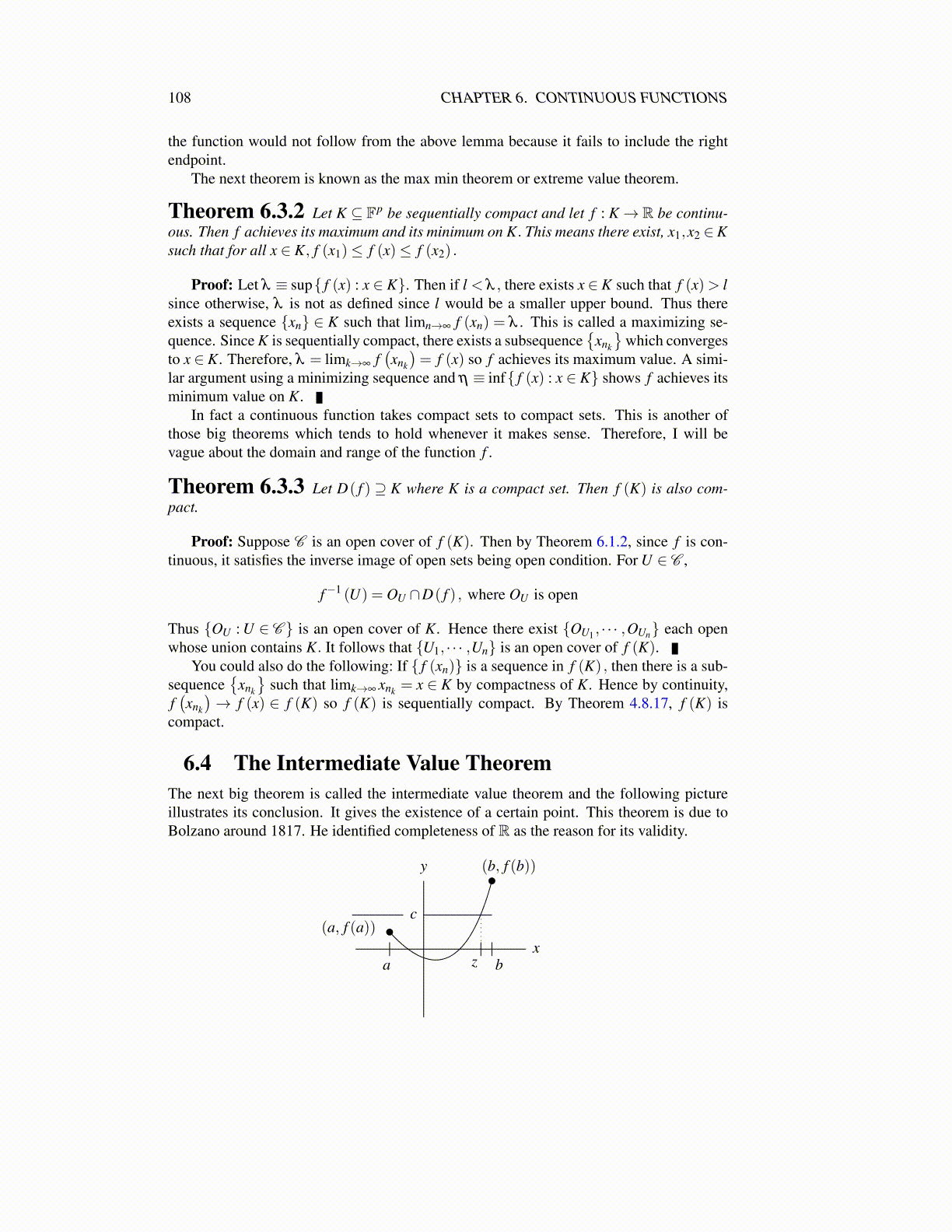
108 CHAPTER 6. CONTINUOUS FUNCTIONS
Corollary 6.4.4 Let f : (a,b)→ R be one to one and continuous. Then f ((a,b)) is anopen interval, (c,d) and f−1 : (c,d)→ (a,b) is continuous.
Proof: Since f is either strictly increasing or strictly decreasing, it maps open intervalsto open intervals. Letting I be an open interval,
(f−1)−1
(I) = f (I) which is an open
interval. Therefore, if V is open,(
f−1)−1
(V ) =(
f−1)−1
(∪x∈V Ix) = ∪x∈V(
f−1)−1
(Ix)which is an open set because it is the union of open sets. Here x ∈ Ix ⊆ V and the openinterval Ix exists because V is open. By Theorem 6.1.2, f−1 is continuous.
6.5 Connected SetsSome sets are connected and some are not. The term means roughly that the set is inone “one piece”. The concept is a little tricky because it is defined in terms of not beingsomething else. In some of the theorems below, I will be vague about where the setsinvolved in the discussion are because it is often the case that it doesn’t matter. However,you can think of the sets as being in Fp where F is either R or C. First recall the followingdefinition.
Definition 6.5.1 Let S be a set. Then S̄, called the closure of S consists of S∪ S′
where S′ denotes the set of limit points of S.
Recall Corollary 4.8.12 which says that S∪ S′, denoted as S is the intersection of allclosed sets which contain S and is a closed set.
Note that it is obvious from the above definition that if S⊆ T, then S̄⊆ T̄ .
Definition 6.5.2 A set S is said to be separated if it is of the form
S = A∪B, where Ā∩B = B̄∩A = /0
A set S is connected if it is not separated.
Example 6.5.3 Consider S = [0,1)∪ (1,2]. This is separated. Therefore, it is not con-nected.
To see this, note that [0,1) = [0,1] which has empty intersection with (1,2]. Similarly(1,2] = [1,2] and has empty intersection with [0,1).
One of the most important theorems about connected sets is the following.
Theorem 6.5.4 Suppose U and V are connected sets having nonempty intersection.Then U ∪V is also connected.
Proof: Suppose U ∪V = A∪B where A∩B = B∩A = /0. Consider the sets A∩U andB∩U. Since
(A∩U)∩ (B∩U) = (A∩U)∩(B∩U
)= /0,
It follows one of these sets must be empty since otherwise, U would be separated. It followsthat U is contained in either A or B. Similarly, V must be contained in either A or B. SinceU and V have nonempty intersection, it follows that both V and U are contained in one ofthe sets A,B. Therefore, the other must be empty and this shows U ∪V cannot be separatedand is therefore, connected.
How do connected sets relate to continuous real valued functions?